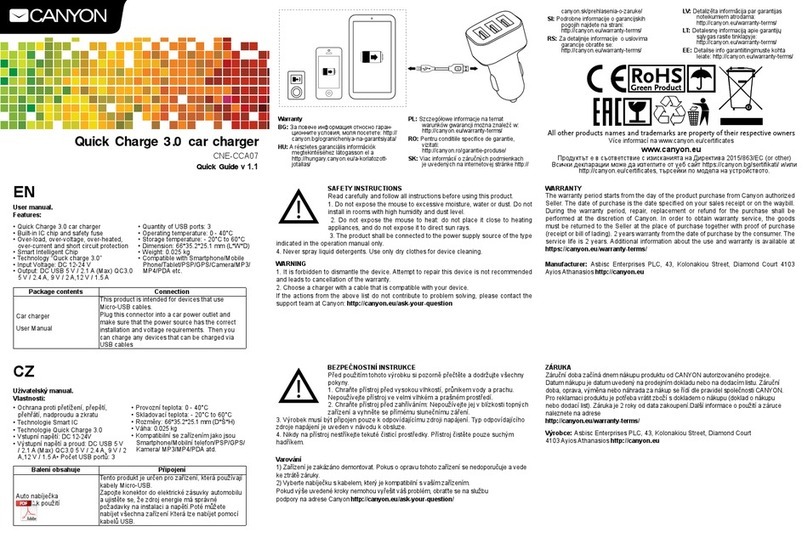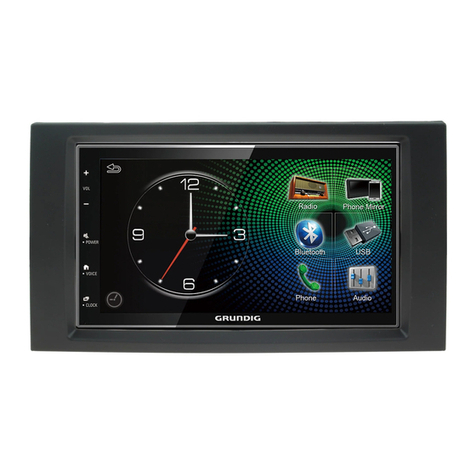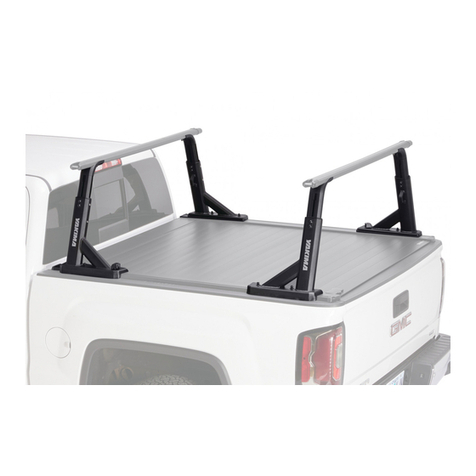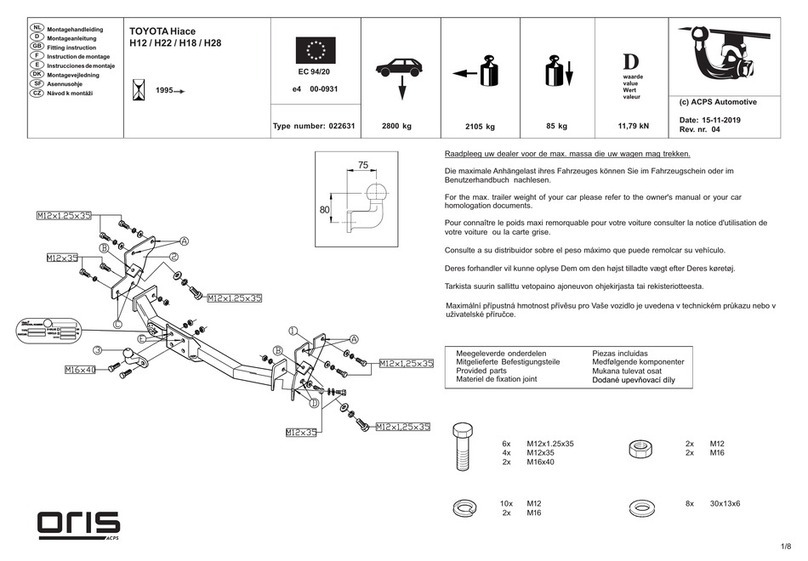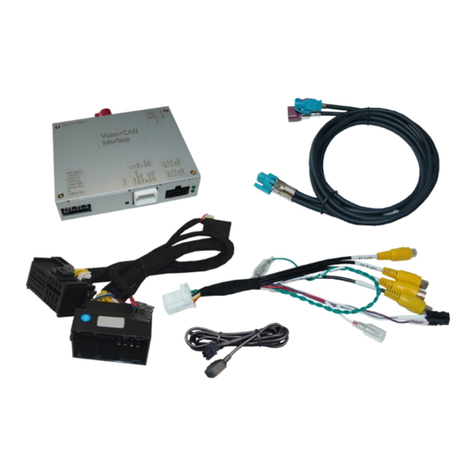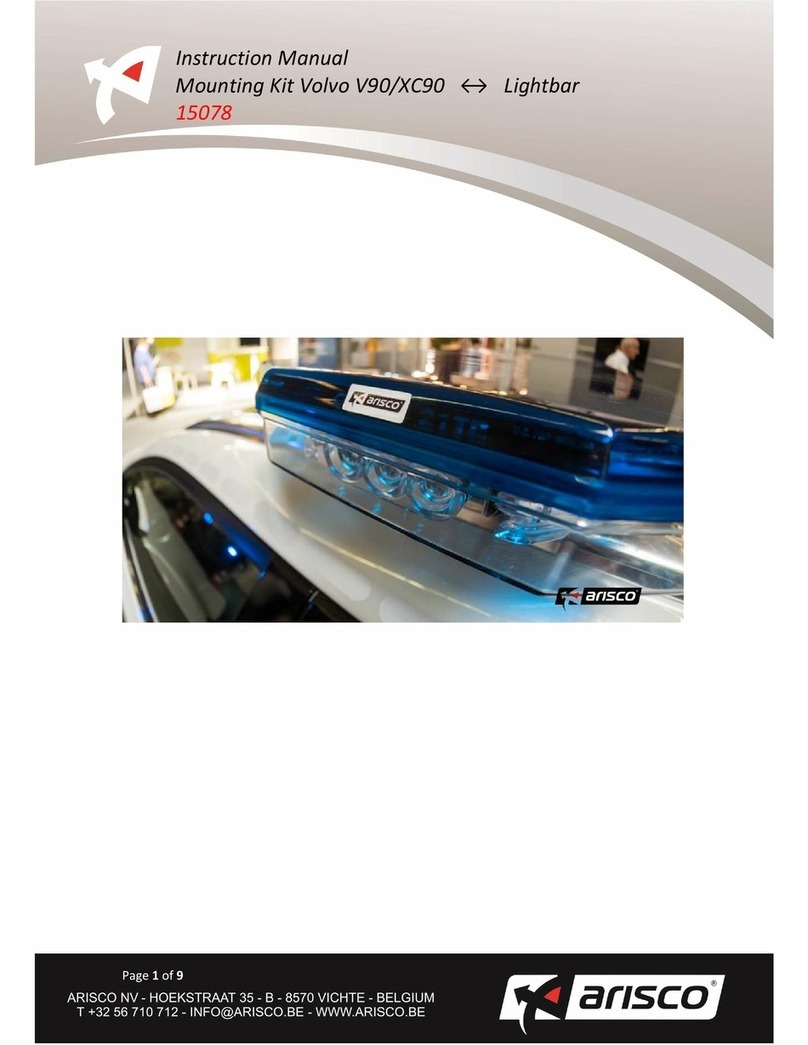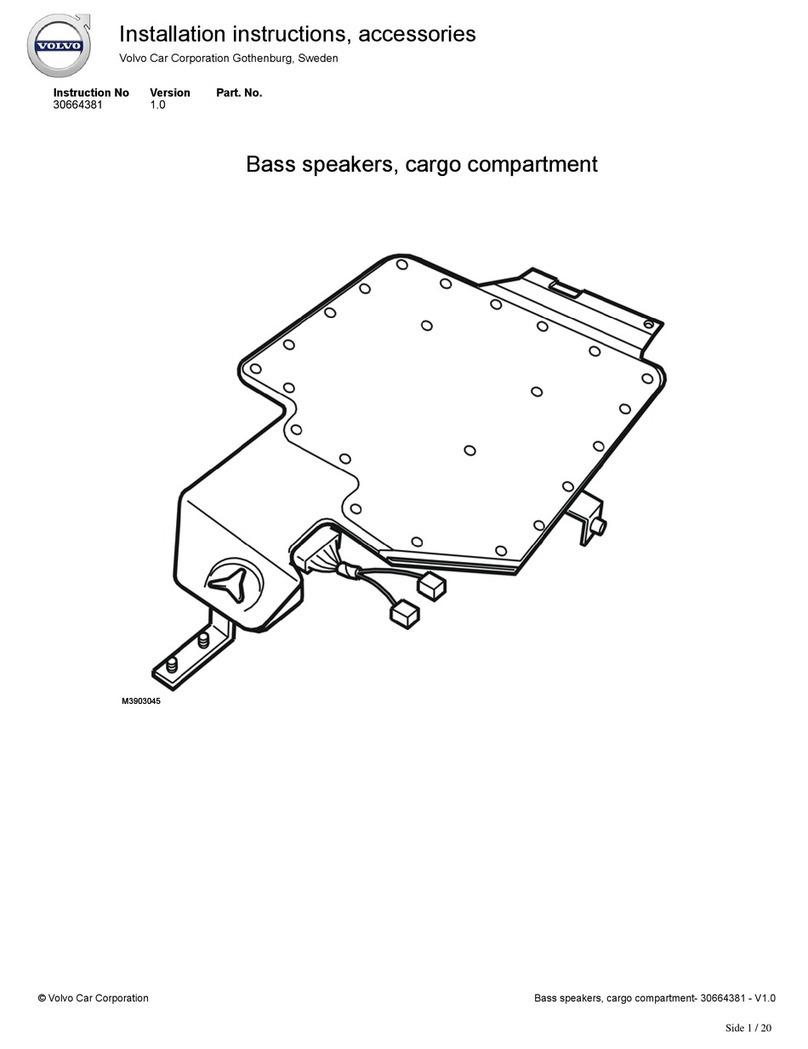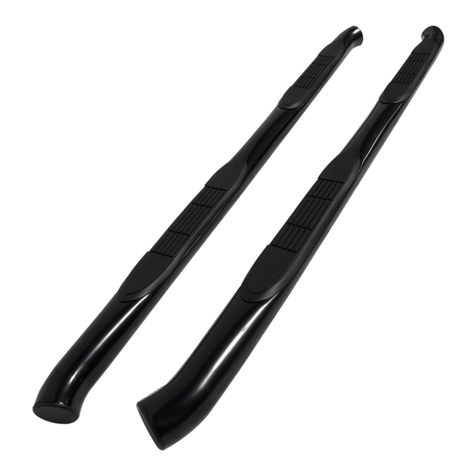Brave BRPTL140H User manual

MBRPTL140HA
Owner’s Manual
Truck Loader Vac:
This machine is intended for vacuuming leaves, clippings, and other similar sized
organic material from the ground into a truck or trailer.
WARNING
READ and UNDERSTAND this manual completely before using truck loader vac.
All operators of this equipment must read and completely understand all safety information, operating instructions,
maintenance and storage instructions. Failure to properly operate and maintain the truck loader vac could result in serious
injury to the operator and bystanders from moving parts that can crush or cut, flying objects, burns, fire or explosion or carbon
monoxide poisoning and be aware of the following hazards.
•WARNING: Never operate this unit free standing. It must be secured in place before use.
•DANGER: Do not operate the truck loader vac near people. Debris can be thrown hundreds of feet. Clear work area of
foreign objects and debris. Debris thrown by truck loader vac can cause serious injury or death.
•CAUTION: Avoid fires. Keep the machine clean of debris, trash and any other flammable material.
•WARNING: Tighten all nuts and bolts before starting. Replace or repair any safety device, bolts, etc if damaged or worn.
•DANGER: Never operate this unit with out the suction hose securely mount to blower housing
•DANGER: Stay clear of rotating blades. Keep hands and feet from impeller.
•DANGER: Never operate truck loader vac without hose mounted securely.
•WARNING: Wear protective clothing. Wear close-fitting clothing and other protective devices appropriate for the job.
•DANGER: Keep riders off machine. Riders can be seriously injured or killed by entanglement or by falling.
•DANGER: Exercise caution while working near machine. Failure to heed warnings may lead to serious injury or death.
•DANGER: Always maintain a safety distance of at least 150 feet. Never operate truck loader vac with bystander’s present.
The truck loader vac creates a serious discharge hazard.
•DANGER: Be aware of the suction power of your Brave Truck Loader, it is capable of vacuuming unwanted material/product.
•DANGER: Do not operate if excessive vibration occurs. Shut off engine immediately if excessive vibration occurs. Check
impeller for loose impeller bolts, worn impeller, loose impeller key, or other issues that could cause the vibration.
STOP!
ADD OIL TO ENGINE BEFORE USING: Engine is shipped without oil. DO NOT start truck loader vac without first adding oil.
INSPECT COMPONENTS: Closely inspect to make sure no components are missing or damaged.
See Initial Unpacking and Set-up for instructions and for whom to contact to report missing or damaged parts.
Any Questions, Comments, Problems or Parts Orders
Call BRAVE Product Support 1-800-350-8739
ITEM NUMBERS: BRPTL140H, BRPTL160B
MANUAL SERIAL TAG HERE

Hazard Signal Word Definitions
2

Table of Contents
3
Important Safety Rules ......................................…….
4
Warning Label Locations ...................................……..
10
Assembly Instructions…………………………………............
11
Machine Component Identification………………………..
11
Operation Instructions ........................................……
13
Maintenance and Storage..................................……..
21
Troubleshooting ...................................……...........…..
23
Specifications .....................….................................….
24
Parts Exploded View ..................................................
25
Warranty………………………………………………...................
28

Important Safety Rules
4
Thank you for purchasing your Brave Truck Loader Vac!
About Your Truck Loader Vac:
This truck loader vac is a machine designed for vacuuming leaves, clippings, and other similar sized organic
material from the ground into a truck or trailer. Do not feed sand, metal, rocks, bottles, cans or other non-
botanical objects and debris into the machine.
Owner/Operator/Renter Training
Read and follow all instructions and safety precautions presented throughout this manual. A summary of
important safety information can be found at the end of the manual. Keep this manual for reference and
review. If the owner of this unit is different than the operator, give a copy of this manual to any operator to
read.
Rental Companies
All persons to whom you rent/loan this truck loader vac must have access to this manual and read it. Advise all
persons who will operate the machine to read it. You should also provide personal instruction on how to
safely operate the truck loader vac and remain available to answer any questions a renter/borrower might
have. If videos are available, have renter watch training video.
Engine Instructions
For detailed Engine operation and maintenance information, always refer to the engine Owner’s Manual
furnished with the truck loader vac.
Product Suitability
Before using, the user shall determine the suitability of this product for their intended use and assumes
liability therein.
Your Brave truck loader vac can be used to remove debris such as leaves, clippings, and other similar sized
organic material from the ground into a truck or trailer. Make sure you completely read and understand this
manual before using the truck loader vac for the first time. If you have any questions, contact your retail or
rental dealer or BRAVE Customer Service at 1-800-350-8739.
BRAVE is constantly improving its products. The specifications outlined herein are subject to change without
prior notice or obligation. The purchaser and/or user shall assume liability for any modification and/or
alterations of this equipment from original design and manufacture.
Contact BRAVE Customer Service at 1-800-350-8739 for any questions about the appropriate use of this
truck loader vac or about optional accessories.
Warranty Registration
Please fill out and submit the warranty registration card so that we have your contact information for any
future product literature or replacement parts you may need. Or, you can register online at
www.braveproducts.com.

Important Safety Rules
5
WARNING
READ OWNER’S MANUAL COMPLETELY
Carefully read and make sure you understand the following safety information before
using the truck loader. Serious injury or death can result if safety instructions are not
followed. Improper use or maintenance of the truck loader can result in serious injury or
death from fire/explosion, carbon monoxide poisoning, lacerations, entanglement or
burns. Damage can also occur to windows, siding, vehicles, and bystanders from chips
and debris which can become projectiles. If the owner of this unit is different than the
operator, give a copy of this manual to any operator to read. Read and follow all
instructions and safety precautions presented throughout this manual. Keep this manual
for reference and review.
GENERAL
•Read manual. Read this Owner’s Manual and the engine Owner’s Manual completely before attempting
to use and service the truck loader vac. Serious injury or death can result if safety instructions are not
followed.
•Instruct operators. The truck loader vac owner must instruct all operators in safe truck loader vac set-up
and operation. Do not allow anyone to operate the truck loader vac who has not read the Owner’s
Manual and been instructed on its safe use.
•Adults only. Only trained adults should operate and service the truck loader vac. Do not let children
operate.
•Under the influence. Never operate, or let anyone else operate, the truck loader vac while under the
influence of alcohol, drugs, or medication.
•Intended use. Carefully read about and understand the intended use of this truck loader vac. Do not use
for other purposes, as unforeseen hazards or equipment damage may result.
•Controls and safety labels. Learn how to use the machine and it’s controls safely. Understand and follow
all safety labels.
•Weather. Never use in foul, bad or questionable weather, which causes an unsafe condition.
•Mounting. Never use unit freestanding. Unit must be secured
•Guards. Never use this equipment with ANY safety features or guards removed.
•Attended. Never leave this unit unattended while in operation.
•Bystanders. Never operate this equipment with bystanders in the area
PROHIBITION AGAINST MODIFICATIONS
Never modify or alter the truck loader vac in any way. Modifications can create serious safety hazards and
will also void the warranty.
•Fuel/exhaust system. Never modify the exhaust system, fuel tanks, or fuel lines. Carbon monoxide
poisoning, fire, or explosion could result.
•Guards. Do not operate truck loader vac unless all guards and cover shields, which prevent access to
moving parts and pinch points, are in place. Failure to guard all moving parts/components may result in
serious injury or death.
SAFETY – BEFORE USE

Important Safety Rules
6
Know how to operate
•Review safety rules. Before use of this truck loader vac, review all “Important Safety Rules.”
•Know how to operate. Be thoroughly familiar with all controls and with the proper use of the
equipment. Know how to stop the truck loader vac quickly if needed.
Getting Ready
•Flying debris. Clear area of objects such as stones, toys, steel wire, etc. that could become caught in
moving machine parts and ejected as a projectile. Never direct discharge material toward anyone. Avoid
discharging material towards a wall, car, house or other objects. Material may ricochet back at operator.
•Operate OUTSIDE only – dangerous carbon monoxide exhaust! truck loader vac gives off carbon
monoxide exhaust, a poisonous gas that can kill. You CANNOT smell it, see it, or taste it. ONLY run truck
loader vac OUTDOORS and away from building air intakes. NEVER run truck loader vac engine inside
homes, garages, sheds, or other semi-enclosed spaces. These spaces can trap poisonous gases.
•Bystanders. Do not operate this equipment near bystanders. Keep area of operation clear of all persons,
especially small children. It is recommended that bystanders keep at least 50 feet away from the area of
operation.
•Cooling ventilation. The truck loader vac needs adequate, unobstructed flow of air to allow for proper
cooling of engine and truck loader vac housing. Do not allow debris to accumulate and block airflow.
•Transporting. During transporting, take precautions to make sure truck loader vac will not tip over and
cause a fuel leak hazard.
•Hot exhaust - fires. Exhaust from engine can be extremely hot and cause fire. Position muffler at least 7
feet from combustible objects during operation.
•Fire extinguisher. Keep a fire extinguisher rated “ABC” by the National Fire Protection Association nearby
is always recommended when using gasoline operated machinery. Keep it properly charged and be
familiar with its use.
SAFETY – DURING USE
•Safety equipment / controls. Always operate the truck loader vac with all safety covers, guards, and
barriers in place and in good working order, and all controls properly adjusted for safe operation.
•Know how to stop. Know how to stop the truck loader vac quickly if needed by Turing the on/off switch
on engine to OFF.
•Slipping/Falling. Operating in wet or icy conditions could lead to losing your footing and slipping or
falling.
•Body parts. Never place hands or feet inside the nozzle intake, debris discharge outlet or near any
moving parts while the blades are turning.The truck loader vac can pull you into the blade, causing
amputation or other body injury.
•Damaged. Do not operate the truck loader vac with damaged, missing, incorrectly adjusted, or broken
parts.
•Check for gas leak before starting. After opening gasoline valve, smell for gas before starting engine. If
you smell gas, DO NOT start engine. DO NOT light a match. DO NOT flip on an electrical switch. Exit area
immediately and call fire department.
•Carbon monoxide exhaust. The running engine gives off carbon monoxide, a poisonous gas that can kill
you. You CANNOT smell it, see it, or taste it. If you start to feel sick, dizzy, or weak while using the truck
loader vac, shut off the engine and get to fresh air RIGHT AWAY. See a doctor. You may have carbon
monoxide poisoning.
•
Other exhaust dangers. This product contains or emits chemicals known to the State of California to

Important Safety Rules
7
cause cancer, birth defects or other reproductive harm. Avoid inhalation of exhaust.
•Smoking/sparks. Never smoke near the running truck loader vac, and never operate near sources of
sparks or flames.
•Hot muffler. Never touch hot muffler or hot exhaust manifold. Exhaust and engine parts can be very hot
and will burn you. Never operate engine with grass, leaves or other combustible materials near the
muffler
•Slopes. Never operate this unit on slopes greater than listed in the specification’s sections of this manual
•Starting. Never attempt to start engine without the hose and all associated safety systems securely in
place.
•Hose. Never remove hose until engine and all moving parts have stopped.
•Clogs: Turn truck loader vac OFF and wait for all moving parts to completely stop. Disconnect the spark
plug wire before attempting to free any clogged area.
•Maintenance/Repair: Turn truck loader vac OFF and wait for all moving parts to completely stop.
Disconnect the spark plug wire before moving, unclogging, refueling or performing maintenance or
repairs.
•Starting & Stopping Unit: Make sure hands, feet and all body parts are clear of intake hose. Make sure
the inlet is empty when starting the machine.
•Machine’s moving parts. Keep hands, feet, and apparel away from moving parts. Never remove any
guard while the unit is operating. Contact with rotating impeller will cause personal injury.
•Refueling. DO NOT refuel the engine until it has cooled at least two minutes.
•Worksite. Set up your work site so you are not endangering people or the surroundings. Ensure work
area is marked and section off so bystanders cannot enter.
•Malfunction during operation. Always shut the machine off if any unusual noise or vibration occurs.
•Vibration. Overexposure to machine vibration on a daily basis may lead to circulatory or nerve damage.
•Adjusting / repairing. Always turn off truck loader vac and remove spark plug or spark plug wire before
working on the truck loader vac to prevent accidental starting.
SAFETY – AFTER USE
•Cool engine before storing. Let engine cool for at least five minutes before storing. A hot engine can be
a fire hazard.
•Shut off fuel supply. Make sure gasoline shut-off valve is in the OFF position.
•Prevent accidental starting. When truck loader vac is not in use, remove key from starter (electric start
engines) and secure in a safe location, or remove spark plug in order to ensure that truck loader vac
cannot be started in a storage location or by untrained persons.
•Storage location. Store the truck loader vac in a dry location away from sources of heat, open flames,
sparks or pilot lights – such as water heaters, space heaters, furnaces, clothes dryers, or other gas
appliances – EVEN IF the truck loader vac’s gas tank is empty. Residual gasoline could ignite.
SAFETY – INSPECTION/MAINTENANCE
Inspect and maintain your truck loader vac on a regular basis and repair as needed to keep it in safe working
condition:
•Turn off truck loader vac. Always turn off truck loader vac and remove spark plug or spark plug wire
before working on the engine or truck loader vac to prevent accidental starting.
•Replace guards / shields. Make sure all guards and shields are replaced after servicing the truck loader
vac.
•Burns. Do not touch hot muffler. Muffler will be hot even if unit is stopped. Allow unit to cool before
servicing.

Important Safety Rules
8
•
Replacement parts. If a part needs replacement, only use parts that meet the manufacturer’s
specifications. Replacement parts that do not meet specifications may result in a safety hazard or poor
operation of the truck loader vac and will void the warranty
Personal protective equipment
•Hearing protection. The use of ear plugs, or other hearing protection device is
recommended for those in close proximity to the truck loader vac while it is
operating.
•Eye protection. Wear ANSI approved eye protection when operating the truck loader
vac.
•Face protection. Wear a full-face visor or mesh visor with protective glasses is
recommended.
•Loose / dangling. Loose or dangling apparel, jewelry or hair can become entangled in
moving parts. Never wear jewelry or loose-fitting clothing when operating the truck
loader vac.
•Long pants. Wear long, heavy-duty pants to protect legs from ejected materials.
GASOLINE SAFETY - RISK OF FIRE AND EXPLOSION
Gasoline is highly flammable and explosive. Drain the fuel into an approved container
OUTDOORS and far away from open flame. NEVER store an engine with fuel in the tank
indoors or in poorly ventilated spaces where fuel vapor can come in contact with static
electric sparks sparks from electric wiring, batteries, or running engines sources of heat
(such as a hot engine or exhaust) open flames, including pilot lights
Gasoline is highly flammable and explosive. You can be burned or seriously injured when
handling fuel. Use extreme care when handling gasoline:
•Fuel outdoors. Fill fuel tank outdoors – never indoors. Gasoline vapors can ignite if
they collect inside an enclosure. Explosion can result.
•Use approved container. Never pump fuel directly into engine at gas station. Static
charge can build and ignite fuel. Use an UL approved fuel container to transfer gas to
the engine.
•Running / hot engine. A running engine is hot enough to ignite fuel. Never add fuel
or remove gas cap if engine is running or still hot. Stop the engine and allow to cool
at least two minutes before adding fuel.
•Heat / flames / sparks. Keep sources of heat, flame, or sparks away while adding fuel.
•Don’t fill to the top DO NOT overfill the gas tank. Allow at least 1” of empty space
below the fill neck to allow for fuel expansion and operation on slopes.
•Replace cap. Replace gas cap securely before starting engine.
•Spills. Clean up fuel spills immediately. Move truck loader vac away from spilled fuel
on the ground. Wipe fuel off engine and wait 5 minutes for excess fuel to evaporate
before starting engine. Gas soaked rags should be disposed of properly.
•On skin / clothes. If gasoline is spilled on your skin or clothes, change clothes and
wash skin immediately.
•Inspect fuel system. Check fuel system on a regular basis. Look for signs of leaks,
damaged fuel tank, cracked hose or a defective fuel shut-off valve. Do not start truck
loader vac until needed repairs have been completed.

Important Safety Rules
9
•Gasoline storage. Store gasoline in a cool, dry place in an UL-approved, tightly sealed
container away from children.
SPECIAL SAFETY INFORMATION ON STATIC ELECTRICITY
Static electricity and filling gasoline:
Static electricity can initiate from ungrounded gasoline tanks or containers, from flowing gasoline, and
from persons carrying a static electric charge
Static electricity on numerous occasions has explosively ignited gasoline vapors that were present during fueling
processes, resulting in serious burns to nearby persons. To avoid static electricity while fueling, certain steps must be
followed before and during the fueling process in order to minimize and safely dissipate static charge build-up.
Filling Portable Containers at Service Stations:
Use a portable container to fill truck loader vac tank. Never fill the truck loader vac gas tank directly from the
service station’s fuel dispenser pump – the truck loader vac tank is not grounded and the high velocity flow of
gasoline from a fuel pump can cause static electric build-up. Use an approved portable container to transfer
gasoline to the truck loader vac tank.
•Use a portable container made of metal or conductive plastic. It will dissipate charge to ground more readily.
•Fill container on the ground. Never fill the portable gas container while it is sitting inside a vehicle, trailer,
trunk, or pick-up truck bed. ALWAYS place container on the ground to be filled.
•Touch a grounded metal object before starting. Always dissipate static charge from your body before beginning
the fueling process by touching a grounded metal object at a safe distance away from fuel sources.
•Keep nozzle in contact with container. Keep fuel dispenser nozzle in contact with the portable container at all
times while filling at a service station. Do not use the nozzle lock-open device on the dispenser hose.
About static electricity and fueling
Many common objects can accumulate and retain a static electric charge. Objects made of non-conductive materials
(e.g. plastics) easily accumulate and retain static electric charge, as can objects made of conductive material (e.g.
metal, water) if they are not electrically grounded. The static electric charge on an object, such as a human body or
plastic fuel tank/container, can reach as high as several thousand volts!
A static electric spark can be generated if the static electric charge stored on an object “jumps” to another, less
charged object. Such a spark can ignite invisible gasoline vapors that are present during fueling situations.
Typical sources of static electric hazards during fueling
The following objects can accumulate a static electric charge and cause an ignition spark in typical fueling situations:
•Ungrounded tanks/containers. Any ungrounded fuel tank or container can accumulate a static electric charge as a
result of contact with other objects or friction during transportation. This static electricity can discharge as a spark
to the grounded gasoline dispenser nozzle, as the nozzle is first brought close to the tank/container at the
beginning of the fueling process.
•Flowing gasoline. Most people are not aware that gasoline accumulates static electric charge while flowing
through a hose or pipe. This charge then transfers to and accumulates in the gas tank or container that is being
filled. The total amount of charge accumulation depends on the amount of gas pumped into the container, the
speed with which it is pumped, and whether or not the tank/container is grounded. If sufficient static electric
charge accumulates in the fuel tank or container during the fueling process, the tank/container may discharge a
spark to the grounded gasoline dispenser nozzle.
•Persons. A person dispensing the gasoline can carry a static electric charge on their body, typically resulting from
contact with their car seat or electronics. The static electricity can discharge as a spark between that person’s hand
and either the grounded dispenser nozzle or the fuel tank opening.
Save These Instructions

Warning Label Locations
10
Reference #
Part #
Description
Decal Sheet Set
ZUBRPTL140H
ZUBRPTL160B
Decal Sheet Set – BRPTL140H Honda Model
Decal Sheet Set – BRPTL160B Briggs Model
Sheet Sets Include:
Ref. 1 – BravePro Branding Decal for Discharge Chute
Ref. 2 – Made in USA
Ref. 3 – Warning, Objects Hazard
Ref. 5 – Do Not Open
Ref. 6 – Brave Pro Branding Decal for Hose Cover
Ref. 8 – Warning, Read Owner’s Manual
Ref. 9 – Danger, Secure Before Transport
Ref. 10 – Prop 65
4
1100-074
Truck loader Safety Decal
7
12133
Danger – Keep hands and feet away
WARNING
ALWAYS make sure safety labels are in place and in good condition. If a safety label is missing or not legible,
order new labels. To order replacement safety decals contact BRAVE Customer Service at 1-800-350-8739

Assembly Instructions
11
I.) Unpack
Your truck loader vac is shipped fully assembled except for a few components: Exhaust Chute, Nozzle,
Floating Collar, Hose Support Collar, Hose Support Boom, Hose Clamps, and Misc. Hardware.
Any Questions, Comments, Problems or Parts Orders
Call BRAVE Product Support 1-800-350-8739

Assembly Instructions
12
Intake Hose Assembly
1.) On one end of the hose, slide on the floating collar (#12387) and attach the nozzle (12386) using
the bridge clamp (#12406). Securely fasten the clamp.
2.) On the other end of the hose, slide the support collar over the hose and attached the safety
flange (#12389) to the hose using the bridge clamp (#12406)
Exhaust Chute Assembly
3.) Attach exhaust chute (#12398) to the top of the loader housing and secure with 8 bolts, washer
and nuts.
4.) Install the discharge flap (#12399) and secure with the supplied hardware.
Safety Flange Assembly
5.) Attach safety flange (#12389) to the front of the truck loader vac housing using the two phenolic
securing knobs.
6.) Carefully stretch the hose and secure the support collar (#12388) at a point where the chain
dangles to the hose.
Hose Support Boom Assembly
7.) Assemble hose support boom/hanger arm (#12403) and attach support chain (#12411) to hose
support boom
Truck Loader Vac Mounting
8.) This unit MUST be securely fastened to a trailer, or truck bed so the exhaust discharges into an
enclosed container. This truck loader vac MUST be securely mounted prior to and during all
operation and assembly. The unit is not intended to be operated free standing and will create an
unsafe situation if attempted. The loader must be secured using 3/8” bolts with washers and
lock nuts.

Operation Instructions
13
Pre-start Check List & Procedures
CAUTION:
Add engine crankcase oil. A new engine is shipped without oil. You must add the correct
amount of oil to engine crankcase or engine will be damaged beyond repair.
Before starting the engine, you will want to make sure you have completed the following:
1. Checking Controls
2. Checking/Adding Oil
3. Filling Truck Loader Vac Gasoline Tank
4. Inspecting Fuel System for Leaks
5. Wearing Personal Protection
6. Ensuring unit is securely mounted
7. Clearing Area of People and Objects
8. Working During Daylight
Each of these procedures is discussed in detail below.
Check controls.
Check that:
•All guards are in place and tight
•Inspect hose mounting flange to blower housing safety switch,
insure it is operational
•Throttle lever operates freely
•Inspect suction hose for damage
•
Hose hanger moves freely
Check/add oil
Check the oil level using the dipstick and add oil as needed daily.
Using a funnel, add oil up to the FULL mark on the dipstick with the
recommended oil type for your engine and expected ambient conditions.
(See engine Owner’s Manual for oil type and capacity, and more detailed
oil check/fill instructions.)
WARNING: Burn hazard
Never open oil fill port while engine is running. Hot oil can spray
over face and body.
˙

Operation Instructions
14
Fill truck loader vac
gasoline tank
Check the gasoline level in the truck loader vac fuel tank. If needed, fill
tank with fresh unleaded gasoline from a portable container, after first
reading the warnings and instructions below.
- Do NOT fill the gas tank to the top. Gasoline may spill when operating
on a slope.
- Do NOT overfill the gasoline tank. Allow at least 1” of empty space
below the fill neck to allow for fuel expansion.
WARNING:Gasoline fire/explosion hazard
Gasoline is highly flammable and explosive. Heat, sparks, and
flames can ignite gasoline vapors, which can become widespread
during fueling. A flash fire ignition and/or explosion could result
and cause serious injury or death. The following conditions could
result in gasoline ignition/explosion:
•gas vapor collection inside enclosures
•static electric sparks
•sparks from electric wiring, batteries, or running engines
•sources of heat (such as a hot engine or exhaust)
•
open flames, including pilot lights
Inspect Fuel System
/ Check for Leaks
Inspect fuel system & check for leaks BEFORE starting truck loader vac.
WARNING: Fuel leak hazard
A leaking fuel line no matter how small can be the source of a fire
or explosion when starting or operating the engine.
•Inspect the entire fuel system. Look for:Signs of leaks, damaged fuel
tank, cracked hose or a defective fuel shut-off valve. Do not start truck
loader vac until needed repairs have been completed.
If truck loader vac is in an enclosed area and you smell gas, DO NOT
start engine! DO NOT light a match. DO NOT flip on an electrical
switch. Exit area immediately leaving doors open and call fire
department.
Personal Protection
Use approved protective clothing and approved protective equipment
when using the machine.
1) Always wear ANSI-approved and OSHA-compliant safety glasses with
side shields and a full-face shield.
2) The use of ear plugs or other hearing protection device is also
recommended for persons working within 15-20 feet of the running
truck loader vac for longer than a few minutes. Hearing can be
damaged from prolonged, close-range exposure to the type of noise
produced by this truck loader vac.

Operation Instructions
15
3) Wear long pants to protect legs from sparks, hot engine and flying
debris.
4) Never wear jewelry or loose-fitting clothing when starting or
operating the truck loader vac or any mechanical device. Loose or
dangling apparel, jewelry or hair can become entangled in moving
parts.
Ensuring unit is
securely mounted
Never operate unit free standing. Unit needs to be mounted securely to
truck or trailer before use.
Clearing Area of
People and Objects
Never direct discharge material toward anyone. Avoid discharging material
towards a wall, car, house or other objects. Material may ricochet back at
operator.
Work During
Daylight Hours
Only use the machine in daylight or in well-lit conditions. Never operate
the truck loader vac after dark.
Starting the Truck Loader Vac
After you have completed the pre-start checklist and procedures, you are ready to start the truck
loader vac.
The following directions detail how to start the engine of your truck loader vac.
WARNING:
Never attempt to use the truck loader vac without proper protective
equipment, particularly eye protection and a full-face shield.
To start the truck loader vac:
Note: For additional engine starting instructions see your engine manual.
WARNING:
Never leave truck loader vac unattended.
1) Turn the On/Off Engine Switch to the ON position located on engine
2) For cold engine, Place the choke in the closed/on choke if engine is cold. If engine is hot,
do not use choke.
3) A) Pull Start: Rapidly pull “Start” cord (recoil starter) with right hand several times until
engine starts. Allow starter cord to return slowly.
B) Electric Start: Turn Key switch to the START position and hold until the engine starts.

Operation Instructions
16
Vacuuming Operation & Safety
•When operating, engine should run at full RPM
•Using a sweeping motion, point hose inlet towards debris and sweep back and forth to remove
debris.
•Keep hand, feet and body parts away from hose inlet, discharge chute and any moving parts.
•Keep hose straight and avoid sharp bends in hose during use. This will prevent clogs.
•Keep nozzle close to debris while using a sweeping motion, but do not bury or block the air
flow of the nozzle.
•
Before shutting unit off, run and evacuate the entire system, hose and blower housing
Stopping the Engine
Stop the engine using the following steps:
1. Turn the On/Off engine switch to OFF position located on engine.
2. Allow the engine to cool for at least 5 minutes before moving to storage or transporting. A hot
engine can be a fire hazard.
Unclogging Unit
Unclogging hose: If decreased suction is present, there maybe a blockage in hose.
1. With engine running and securely mounted, stretch hose out fully to dislodge.
2. If the hose does not clear the clog by stretching, you will need to turn OFF engine and wait for
impeller to STOP completely.
3. Disconnect spark plug wire and battery cables if applicable.
4. Remove the hose assembly. Wearing gloves, clear any debris that is clogging the hose.
5. Once clog is cleared, reassemble and reconnect the spark plug wire to resume operation.
Unclogging Housing or Exhaust Chute: If decreased suction is present, there may be a blockage
1. Turn engine OFF.
2. Wait for impeller to completely STOP.
3. Disconnect spark plug wire and battery cables if applicable.
4. Remove the hose assembly from housing to locate clog.
5. If possible clear clog from housing intake opening.

Operation Instructions
17
6. If clog is present in discharge chute, carefully remove chute. Note this is heavy, please use
caution removing. Wear gloves, clear debris clogging chute.
7. Once clog is cleared, reassemble and reconnect the spark plug wire and battery cables if
applicable to resume operation.
CAUTION:
Caution should be used when clearing the clogged debris. Always wear gloves. Sharp
edges on the impeller or objects maybe be present.
Refueling
1) Before removing gas cap, turn engine off and allow to cool for at least two minutes.
Note: A running, or hot engine can ignite fuel.
2) Remove gasoline cap.
3) Add gasoline through the fill opening:
-Use only an UL-approved portable gasoline container to transfer the gasoline to the truck
loader vac’s tank.
-Be aware of safety warning and instructions below for avoiding static electric caused fires.
WARNING:
Static electric spark hazard
A static electric spark can explosively ignite gasoline vapor, resulting in a flash fire that
could cause serious injury or death. See “Special Safety Information on Static Electricity”
in this manual.
4) Clean up gasoline spills /splashes immediately.
•If possible, move the truck loader vac away from spilled gasoline on the ground.
•Wipe up spilled gasoline and wait 5 minutes for excess gasoline to evaporate before starting
engine.
•Gasoline soaked rags are flammable and should be disposed of properly.
•If gasoline is spilled on your skin or clothes, change clothes and wash skin immediately.
5) Replace gasoline cap securely before starting engine.
6) Store extra gasoline in a cool, dry place in an UL-approved, tightly sealed container.
7) Filling towable units or portable containers at service stations:
Even if you have a towable unit, avoid static electric sparking while filling the
gasoline tank:
•Never fill the truck loader vac’s gas tank directly from the fuel pump. The truck
loader vac’s tank is not grounded and high velocity flow from the pump can
cause static electricity build-up. Use an approved portable container to

Operation Instructions
18
transfer gas to the truck loader vac’s tank.
•Use a portable container made of metal or conductive plastic. This is preferred
because it dissipates static charge to ground more readily.
•Never fill a portable gas container while it is sitting inside a vehicle, trailer,
trunk, or pick-up truck bed. ALWAYS place container on the ground to be
filled.
•Keep nozzle in contact with container while filling. Do not use a nozzle lock-
open device.
Storing the Truck Loader Vac
When you are finished using the truck loader vac and it has cooled, you must:
oCool engine before storage.
oClean the truck loader vac.
oInspect for worn or damaged parts.
oChoose covered storage location.
oPrevent accidental starting.
oPlan on exercising the engine at least monthly unless the truck loader vac is prepared for
long-term storage.
Detailed instructions are provided below.
Cool engine
Let engine cool for at least five minutes before storing. A hot engine can
be a fire hazard.
Clean truck loader
vac
Clean all grease, dirt, mud and other foreign matter from the machine.
Touch up paint damage to prevent rust.
Inspect truck loader
vac
Inspect the machine for worn or damaged parts and tighten any nuts or
screws that may have become loose. Pay particular attention to the
impeller.
Choose a storage
location
Store the truck loader vac in a location that is:
oClean and dry
oAway from sources of heat, open flames, sparks, or pilot lights, even
if the truck loader vac’s gas tank is empty. Residual gasoline could
ignite.
oAway from extreme high or low temperatures.
oCover it for extra protection
Remove key
Remove key from starter and secure key in a safe location, or remove

Operation Instructions
19
spark plug, in order to ensure the truck loader vac cannot be started in a
storage location or by untrained persons or children.
Start truck loader
vac every 4 weeks
The truck loader vac should be started regularly. At least every four
weeks, start the engine and let it run for 10 to 15 minutes.
Monthly exercising of the truck loader vac will dry out any moisture that
has accumulated, lubricate cylinders, and clean out old gas in the
carburetor. Moisture, old gas, and dry mechanical parts cause
deterioration in stored engines.
Prepare engine for
long term (seasonal)
storage if needed
If you will not be able to start the truck loader vac regularly, you must
prepare the engine for long term storage to prevent gum deposits from
forming and causing malfunction of the engine.
Prepare engine for long term storage by:
oRemoving all gasoline from the tank and carburetor
OR
oAdding fuel stabilizer to the gasoline (following manufacturer’s
instructions)
Fuel stabilizer steps:
1. Ensure gas tank is full.
2. Add fuel stabilizer to fuel tank.
3. Run engine at least 10 minutes after adding stabilizer to
allow it to enter the fuel system.
4. Shut off engine
5. Disconnect spark plug wire and remove spark plug
6. Add one teaspoon oil through spark plug hole
7. Place rag over spark plug hole and turn starter (or pull the
recoil) a few times to lubricate the combustion chamber.
8. Replace spark plug, but do not reconnect the spark plug
wire.
WARNING:Gasoline fire/explosion hazard
Gasoline is highly flammable and explosive. Drain the fuel into an
approved container OUTDOORS and far away from open flame.
NEVER store an engine with fuel in the tank indoors or in poorly
ventilated spaces where fuel vapor can come in contact with
•static electric sparks
•sparks from electric wiring, batteries, or running engines
•sources of heat (such as a hot engine or exhaust)
•
open flames, including pilot lights

Operation Instructions
20
WARNING
ALWAYS shut off the engine, make sure the engine is cool, and disconnect the spark plug before cleaning,
adjusting, or servicing the truck loader vac. Make sure all guards and shields are replaced before using.
Hose Care
The hose is a replaceable wear item and care should be given to ensure a long hose life
To maintain and increase the life of your hose, rotate hose and reposition nozzle and collar
periodically. Avoid wearing one side by rotating during use.
Keep hose in good condition by never dragging, avoid sharp bends, and keep hose as straight as
possible to avoid clogs and for best suction. Always remove the hose and store safety before
transporting truck loader vac. Storing hose in a straight and flat manner will help to maintain its
flexibility.
Battery Maintenance (when applicable)
Maintain and extend the life of your battery with proper maintenance care
•Do not run the battery charge down too low.
•Store unused battery in cool, dry area. Do not allow to freeze.
•If not being used, charge the battery every 4 weeks.
•Do not overcharge battery. If battery is fully charged do not charge.
•When battery is low, do not continue to crank engine.
•Operate engine for at least 45 minutes to maintain a properly charge battery.
•Use a trickle charger if the battery loses its charge to recharge it. Be sure to check your
battery and charger to ensure compatibility. Using a charger with higher amps will cause
damage to battery.
•
Disconnect battery from charger once charged.
This manual suits for next models
1
Table of contents
Popular Automobile Accessories manuals by other brands
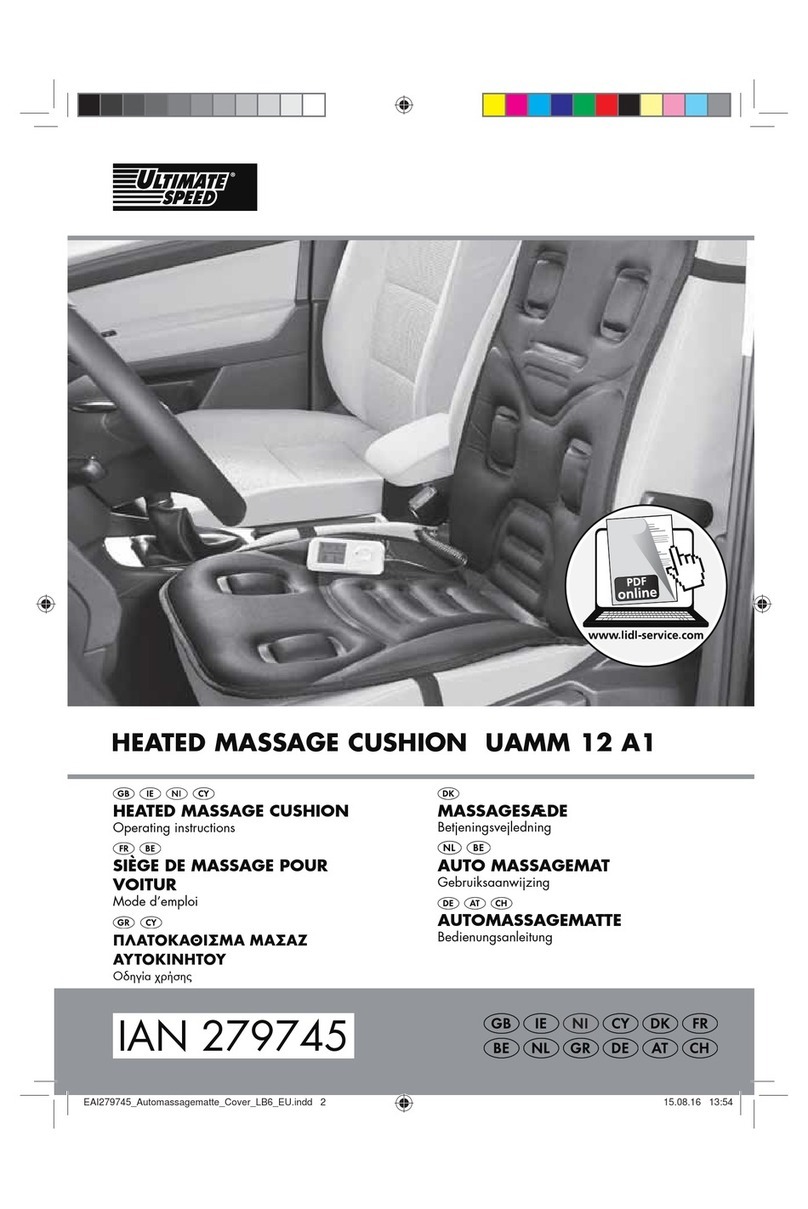
ULTIMATE SPEED
ULTIMATE SPEED UAMM 12 A1 operating instructions
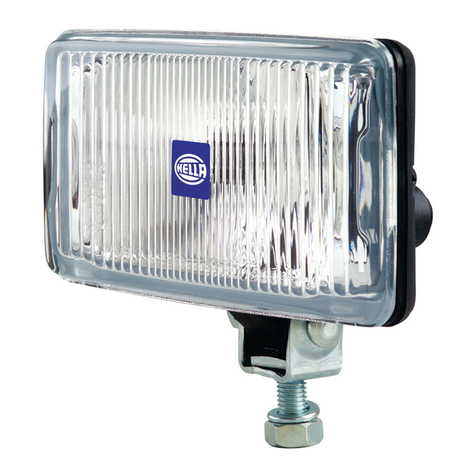
Hella
Hella Comet 450 Mounting instructions
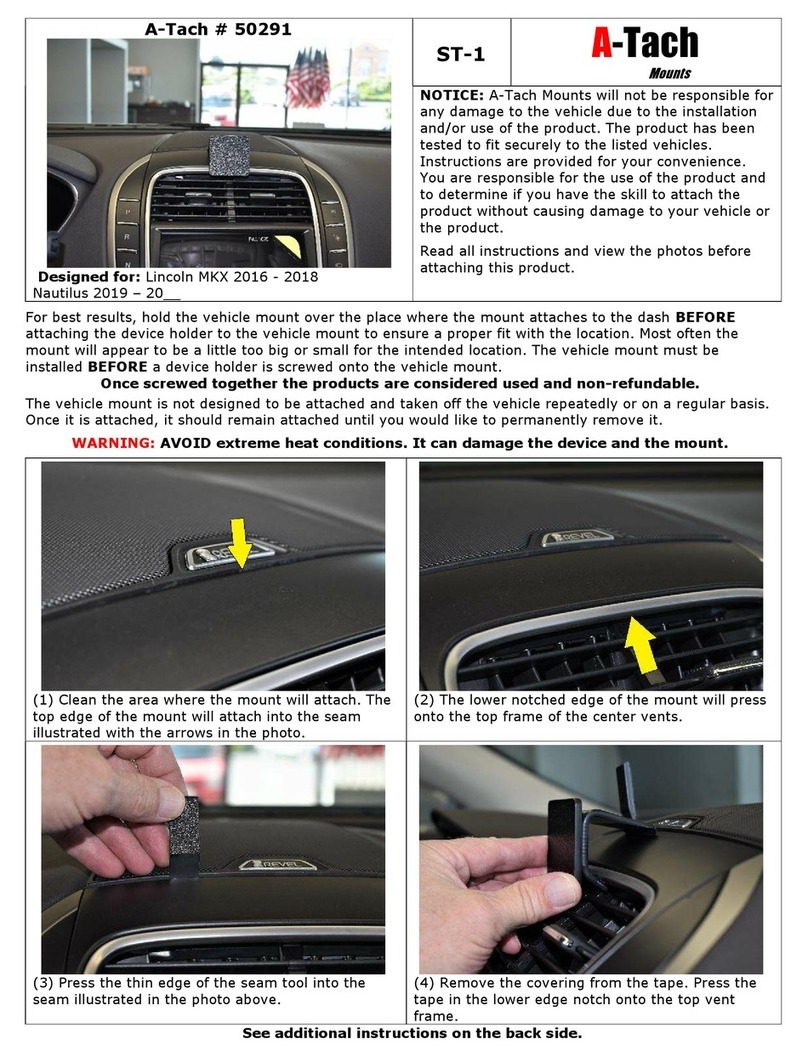
A-Tach Mounts
A-Tach Mounts 50291 quick start guide

Manson Engineering Industrial
Manson Engineering Industrial SBC-5925 Operation manuals
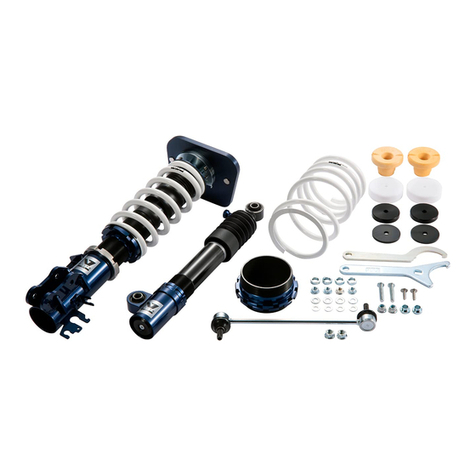
HKS
HKS VIITS-SS001 installation manual
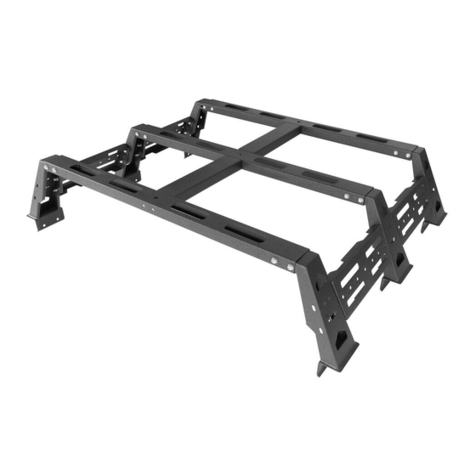
HOOKE ROAD
HOOKE ROAD BXG.8207 quick start guide

